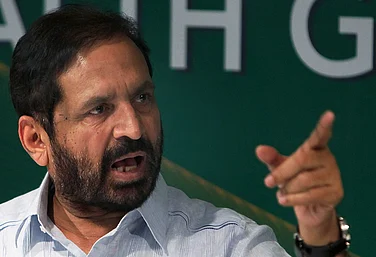Most parts of India are expected to see above-normal temperatures and more heatwave days this summer season but the national capital is yet to implement a heat action plan (HAP), four years after the Centre recommended it to do so.
Environment Minister Gopal Rai told PTI on Tuesday that the government is "holding discussions with experts, and a heatwave action plan will be prepared if something concrete emerges".
HAPs are the primary policy response to economically damaging and life-threatening heatwaves. They prescribe a number of activities, disaster responses and post-heatwave response measures to decrease the impact of heatwaves.
Heatwave conditions persisted in parts of Delhi for the third consecutive day on Tuesday.
Greenpeace India has also written to Chief Minister Arvind Kejriwal, urging him to publish a heat action plan by May 7 after consultations with all stakeholders.
The environmental NGO said heatwaves adversely impact thousands of outdoor or construction workers, the elderly and newborns in the capital.
"HAPs have proven effective in several regions across India, making the lack of action from the Delhi government concerning. With a population of over 18 million, including 11 million people in the informal sector and many migrants from climate-sensitive areas, it is imperative that the Delhi government takes immediate action to release the HAP and protect vulnerable populations from the impacts of heat waves," Avinash Chanchal, Campaign Manager of Greenpeace India, told PTI.
Earlier this month, the India Meteorological Department (IMD) predicted above-normal maximum temperatures for most parts of the country from April to June, except parts of the northwest and peninsular regions.
Above-normal heatwave days are expected in most parts of central, east, and northwest India during this period.
In 2022, Delhi recorded its second hottest April since 1951 with a monthly average maximum temperature of 40.2 degrees Celsius.
The city saw nine heatwave days in April last year, including four in the first 10 days, which was the maximum in the month since 2010.
Delhi had recorded a high of 43.5 degrees Celsius on April 28 and April 29 last year -- the highest maximum temperature in the month in 12 years.
Studies show India is one of the most exposed and vulnerable countries to heat.
Between 1951 and 2016, three-day concurrent hot day and hot night events have increased significantly and are projected to increase up to four times by 2050 under the intermediate and high emission pathways of Representative Concentration Pathways (RCP) 4.5 and 8.5.
RCPs capture assumptions about economic, social and physical changes to the environment that will influence climate change within a set of scenarios. The conditions of each scenario are used to model possible future climate evolution.
Heatwaves are also projected to come earlier, stay longer and become more frequent, with urban heat island effects exacerbating heat impacts. The increased heat is already leading to more heat-related deaths, heat stress, unbearable working conditions, and a wider spread of vector-borne diseases.
By 2050, as many as 24 urban centres are projected to breach average summertime highs of at least 35 degrees Celsius, disproportionately impacting the economically weaker sections.
The International Labour Organisation estimates that 5.3 per cent of working hours, or an equivalent of 34 million jobs, would be lost due to heat stress by 2030.
- With PTI Input


























